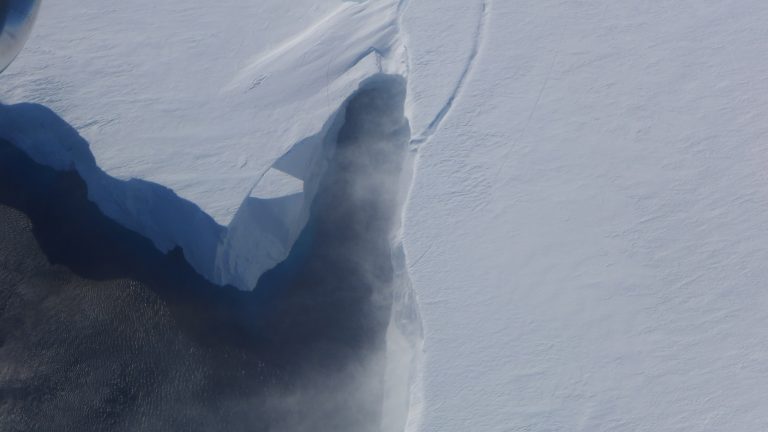SOURCE: State of the Planet, Columbia University
DATE: December 11, 2017
SNIP: The coasts of Antarctica are ringed with ice shelves–massive expanses of ice floating on the surrounding ocean that form the outermost extensions of the glaciers that cover the land behind them. Many shelves appear to be thinning with climate change. Now, a new study shows that even minor deterioration of ice shelves can instantaneously hasten the decline of ice hundreds of miles landward. The new research is the first to quantify the inland impacts of thinning ice shelves in a systematic manner.
Glaciers are basically rivers of ice, slowly, constantly pushing their way to the sea. In Antarctica, ice shelves are thought to act as buttresses, helping slow down this flow. Thus scientists fear that as the ice shelves deteriorate, glaciers will speed up and feed sea-level rise. So far, it has been generally assumed that this would happen only if the shelves melted back to the hinge point where they are anchored to land–the so-called grounding line. But in the new study, scientists found that melting in the middle or even near the fringes of ice shelves can increase glacier flow far away. The study appears today in the journal Nature Climate Change.
The researchers showed that in some areas, deteriorating ice can send a signal as far as 900 kilometers (560 miles) landward, speeding glacier flow. “While our approach is purely diagnostic and cannot be directly translated into a forecast of ice-mass loss, it shows the risks we run in Antarctica if we do not limit heating up our planet,” said coauthor Anders Levermann of the Potsdam Institute for Climate Impact Research (PIK) and Columbia University’s Lamont-Doherty Earth Observatory.

